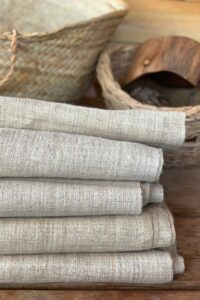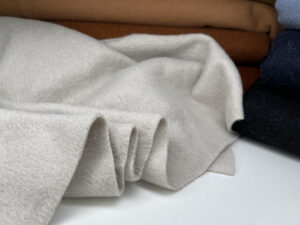Can You Use Satin and Mohair for Outdoor Wear?
In the world of fashion and sewing, fabric compatibility is crucial for creating garments that are both functional and stylish. When considering satin and mohair, two distinct materials, understanding their compatibility helps in crafting outdoor wear that meets both aesthetic and practical needs. This article will explore whether these fabrics can be effectively combined for outdoor applications, providing insights into their properties, benefits, challenges, and care tips.
Compatibility Analysis
Can satin and mohair be used together for outdoor wear? The short answer is: Yes, but with considerations. Satin, known for its smooth, glossy finish, and mohair, prized for its warmth and texture, can create a visually appealing and functional combination if used thoughtfully. Here’s why:
- Texture and Weight: Satin’s sleek surface contrasts beautifully with mohair’s soft, fuzzy texture, creating a visually interesting piece. However, satin is typically lighter, so balancing the weight is crucial.
- Stretch and Care Requirements: Satin and mohair have different stretch and care needs. Satin is less forgiving and more prone to wrinkles, while mohair offers elasticity and warmth. Careful handling during sewing and maintenance is essential.
- Durability: Mohair is durable and resistant to wear, making it suitable for outdoor use. Satin, while elegant, may require reinforcement in high-stress areas.
Fabric Properties Comparison Table
| Property | Satin | Mohair |
|---|---|---|
| Fiber Content | Typically synthetic or silk | Natural (from Angora goats) |
| Weight and Thickness | Light to medium | Medium to heavy |
| Breathability | Moderate | High |
| Moisture-wicking | Low | High |
| Stretch and Elasticity | Low | Moderate to high |
| Wrinkle Resistance | Low | Moderate |
| Care Instructions | Hand wash or gentle cycle; low iron | Dry clean or gentle hand wash |
| Durability | Moderate | High |
Benefits of Mixing These Fabrics
Combining satin and mohair can enhance texture and visual interest, offering a luxurious feel. The juxtaposition of satin’s sheen with mohair’s softness can elevate the comfort and performance of outdoor wear. This pairing also offers better drape and movement, making garments more dynamic and stylish. Additionally, such a combination can be cost-effective, as mohair’s durability offsets satin’s delicacy, and offers seasonal versatility—mohair provides warmth, while satin adds a touch of elegance. The design possibilities are vast, allowing for creative expression in both fashion and home decor.
Potential Challenges
- Different Shrinkage Rates: Satin and mohair may shrink differently, affecting fit and finish. Pre-washing and careful planning can mitigate this.
- Conflicting Care Requirements: Satin’s delicate nature contrasts with mohair’s robustness. Opt for the gentlest shared care method.
- Texture Clash or Pilling: The difference in texture might cause pilling. Choose high-quality satin and mohair to minimize this risk.
- Seam Puckering: The disparity in fabric weight can lead to puckering. Use appropriate interfacing and stabilizers.
- Color Bleeding or Fading: Test for colorfastness before combining fabrics. Use color-safe detergents and avoid prolonged sun exposure.
Sewing & Styling Tips
For sewing satin and mohair together, use a fine needle (size 70/10 or 80/12) to prevent fabric damage. A polyester thread works well for its strength and flexibility. Consider using interfacing to stabilize seams and prevent puckering. French seams or serged edges can provide a clean finish. Choose patterns that allow for the unique drape of these fabrics, such as loose-fitting jackets or layered skirts. For styling, pair with simple accessories to let the fabric combination shine, and consider using these textiles for luxurious home decor items like throws or cushions.
Care & Maintenance Guide
When caring for satin and mohair blends, wash gently in cold water and air dry to avoid fabric damage. Iron satin on a low setting with a cloth barrier, and steam mohair to maintain its fluffiness. For stains, treat satin with mild soap and water, and mohair with a specialized wool cleaner. Long-term care involves storing garments away from direct sunlight and using padded hangers to maintain shape.
FAQ Section
- Can you wash satin and mohair together? It’s best to hand wash separately to respect each fabric’s needs.
- Will satin shrink more than mohair? Satin may shrink more; pre-wash to avoid surprises.
- What needle size should I use for sewing these fabrics together? A size 70/10 or 80/12 needle is recommended.
- Can you mix satin and mohair in one garment? Yes, with careful planning and execution.
- How do you prevent seam puckering when combining these fabrics? Use interfacing and stabilize seams properly.
- Is it okay to mix satin and mohair for upholstery? It’s possible, but consider durability and wear.
- What’s the best way to finish seams with these fabrics? French seams or serged edges provide a polished finish.
By understanding the properties and challenges of satin and mohair, you can create outdoor wear that is both stylish and functional. With careful consideration and the right techniques, these fabrics can be successfully combined to produce unique and durable garments.


Leave a Reply